Here are three sessions plans for improving a goalkeeper’s ability to deal with crosses.
Courtesy of Andy Elleray, author-extraordinaire of our goalkeeping titles.

* * * * *
Claiming The Ball Under Pressure
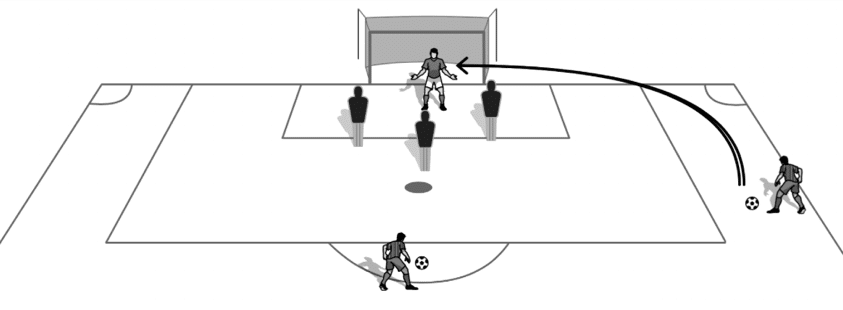
Description
- This practice is focused on the goalkeeper claiming the ball under pressure and with ‘traffic’ around them.
- With an emphasis on building confidence and familiarity in claiming the ball, the practice will start unopposed.
- The ball is played towards the goalkeeper who looks to claim the cross.
- The position of the cross can, of course, be fluid. Bear in mind the different demands on the goalkeeper from different crossing positions (this is more advanced tactical play, however).
Progressions
- The session is based around front, central, or back post crosses, and will dictate the type of service put into the penalty area.
- The server can use a stationary or moving ball to deliver the crosses.
- Inswinging or outswinging deliveries.
- Add in a shot from outside the box to add a shot stopping variant.
Main Coaching Points
- How does the goalkeeper assess the ball and then react accordingly?
- As this is a basic practice, the need to think about factors such as zones to defend, and what defenders might do, should be set aside for now.
- Introduce the starting position early on. The age of the goalkeeper is a factor here due to pitch sizes and the relative lack of importance of dealing with crosses at foundation phase level (7-11-year-olds).
* * * * *
Crossing & Aerial Play – The Cut Back
What
The cut back is a type of cross that is designed to attack the goal in a direct way. The ball is played in from the by-line, or from the far side of the penalty area.
The attacking side is looking for late runs from attackers and to draw the goalkeeper/defenders away from protecting the goal.
When
A situation rather than a technique will be shown here.
How
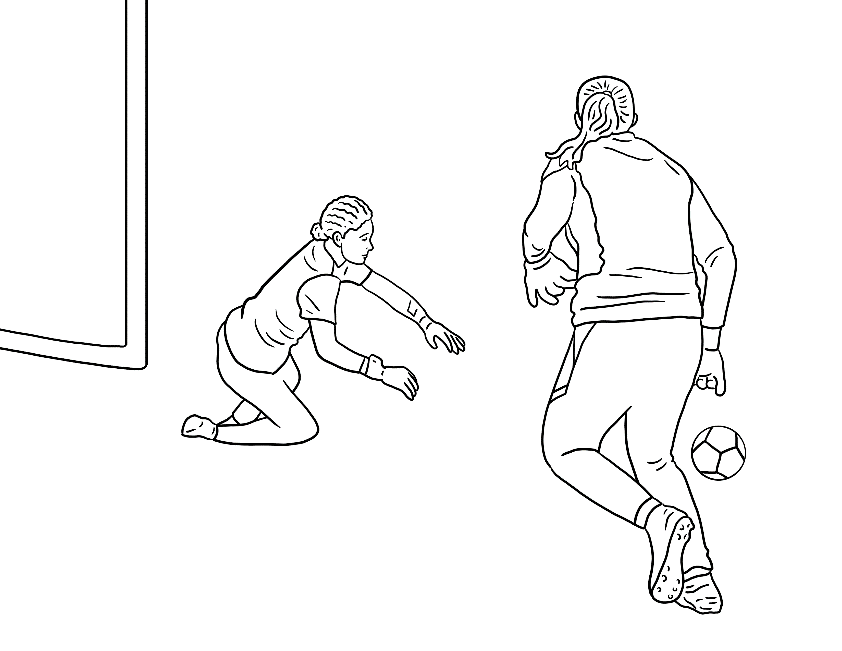
The goalkeeper can deal with the cut back in a couple of different ways:
- They can look to intercept the ball before it reaches an attacker – this tactic would depend on whether there are defenders in the vicinity.
- They can drop and look to make the save – it’s important that the goalkeeper drops into line where the first contact will take place. This requires speed and balance to cover the goal.
The vast majority of saves will be reaction-based and instinctive saves, rather than a pre-determined routine.
Training Practice
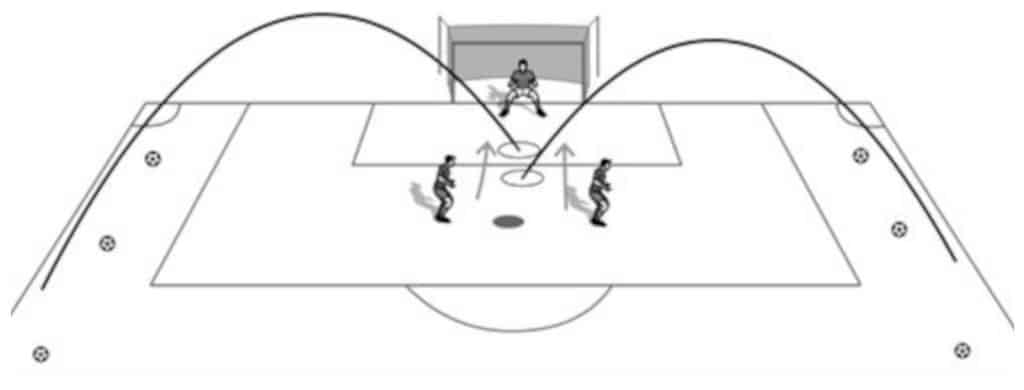
Description
- The ball is played into the penalty area with 2 attackers trying to get on the end of the cross.
- The goalkeeper looks to affect the ball at every opportunity (due to their being no defenders).
- This way, the goalkeeper has to be positive and deal with the ball. They’ll eventually find the balls they are comfortable with coming for and the distance they can travel from the goal mouth.
Progressions
- Add in another attacker and/or defender to increase complexity.
- Change the crossing range to give the goalkeeper different ball flights and entries.
- Inswinging or outswinging deliveries.
Main Coaching Points
- How early is the goalkeeper able to assess the ball (using the factors discussed previously)?
- What does hand contact look like in terms of timing, and the amount of purchase the keeper gets on the ball.
- How does the goalkeeper deal with contact and being off balance?
- If the ball is way out of the goalkeeper’s reach, make sure they drop off into the line of the contact to prepare for a save.
* * * * *
Crossing & Aerial Play – Flying Punch
What
The flying punch could be considered a high-risk action! But if used at the right time and in the right way can be highly effective for intercepting balls. And it is also very proactive!
When
This is used when the goalkeeper isn’t within standing reach of the ball. They usually have to travel and dive into the ball in order to clear it. Sometimes, this is a last resort, such as when an attacker is unmarked at the back post, around 6 yards out, and the ball is going towards them from the opposite side of the penalty area. Rather than the goalkeeper having to deal with a shot-stopping situation (which would be tough to save in this scenario), they look to use the flying punch to move the ball out of danger.
How
From a handing perspective, the principles are the same as both punching actions. The only difference is that the arms would be more parallel position to the ground – see the below image.
The body is propelled towards the ball to intercept it before it reaches attacking players. Notice how the goalkeeper in this image is flying through the air with real positive intent.
Tactically, an early call and positive intent is crucial to making this save a success. Doing so will allow the defenders to clear the path for the goalkeeper by blocking opposing players.
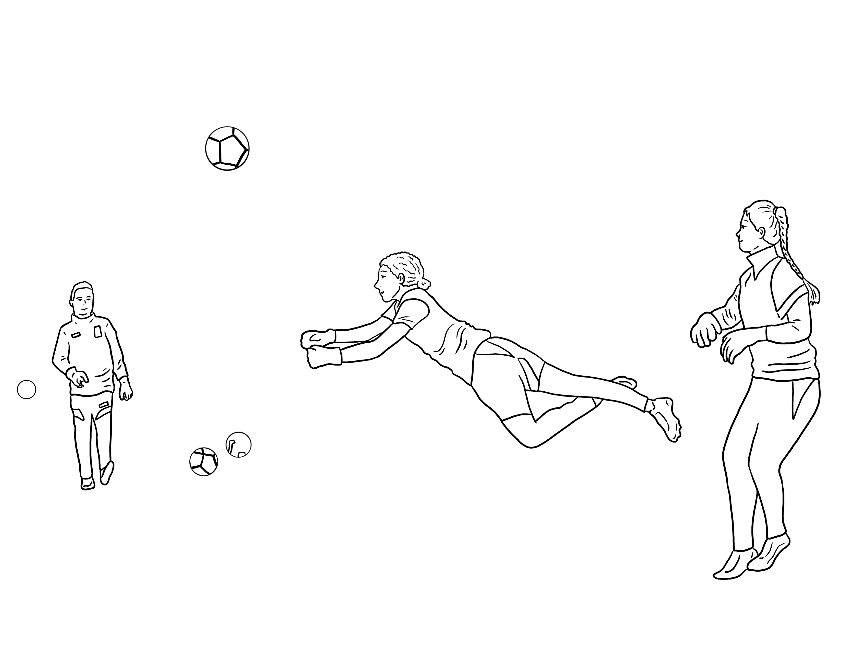
Training Practice
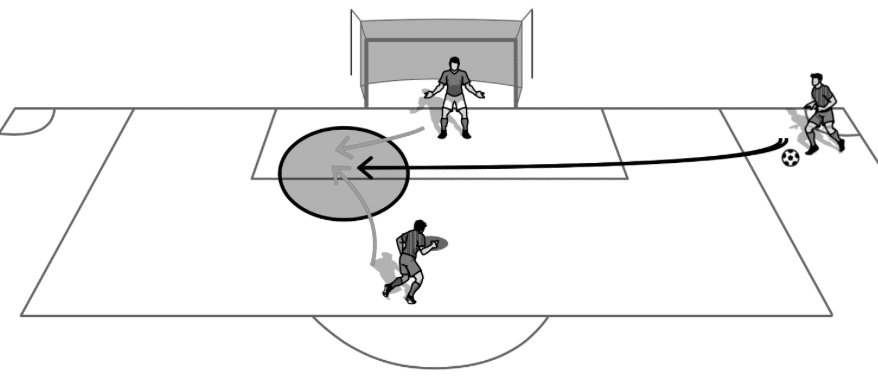
Description
- The ball is delivered from a wide area, although the server can come 10-12 yards closer towards the penalty area as required.
- The pace on the ball will need to be fairly firm in order to practice the flying dive – it needs to be like a shot across the face of the goal.
- An attacker will be looking to score if the goalkeeper misses the ball by mistiming their dive, or if they don’t get sufficient contact on the ball to divert it away from the attacker.
Progressions
- Change the runs of the attacker to either work the front half or back half of the goal – this will give the goalkeeper a different angle for their diving punch.
- Inswinging or outswinging delivery.
Main Coaching Points
- The timing of the action is absolutely crucial here. If the timing is wrong, then the goalkeeper won’t get to the ball or not get the right contact on the ball.
- Give the goalkeeper praise for intent as they will get things wrong!
